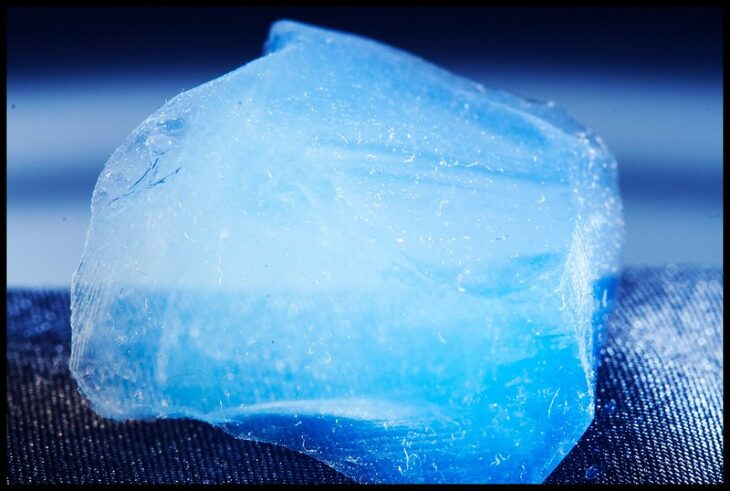When thick oil from tanker or pipeline accidents spreads across the ocean, cleaning it up often creates more waste than it removes. Traditional synthetic tools like polypropylene pads and oil-dispersants are made from chemicals that are toxic and slow to break down. To offer a greener alternative, scientists are turning to natural materials like coconut husks that absorb oil without adding pollution. These bio-based materials are safe and degrade naturally without harming the environment.
One class of bio-based materials that scientists have explored to clean up oil spills is long chains of repeating molecules called polymers. Researchers have combined different bio-based polymers to form hybrid materials called composites. These composite materials include a special type of highly porous solid made mostly of air, known as an aerogel. Depending on the materials used, an iPhone-sized aerogel could weigh less than a small paper clip. And since it’s highly porous, it can soak up lots of oil like a sponge on overdrive!
Scientists in the past made bio-based aerogels using chitosan (CS) from crustacean shells and sodium alginate (SA) from brown seaweed. However, CS and SA are water-loving compounds, known as hydrophilic, so they are soluble in water. This means they’re difficult to use for cleaning up oil spills in large bodies of water, because they would dissolve before they could absorb much oil. Moreover, CS-SA aerogels are often relatively weak and inflexible, raising concerns about how many times they can be reused.
To overcome these limitations, researchers at the National University of Singapore designed a new CS-SA aerogel. This improved aerogel not only strongly repels water but is also lightweight, durable, and reusable across multiple oil absorption cycles.
To synthesize the aerogel, researchers first dissolved CS and SA into a solution and sent sound waves through it. The sound waves weave through the polymer chains, untangling and reassembling them into tiny strands called nanofibers. To combat the hydrophilic nature of CS and SA, the researchers also included water-repellent or hydrophobic chemicals like methyltrimethoxysilane or MTMS.
Next, they poured the mixture into molds and placed them in liquid nitrogen. This caused ice crystals to form in different parts of the solution, pushing the nanofibers to the edges where they clumped together to build a honeycomb-like microstructure. The researchers then removed the water by freezing and directly sublimating it to vapor.
After fabricating the aerogels, the researchers evaluated their porosity and strength. They examined the aerogels’ internal structure using high-powered microscopes to see how the nanofibers affected porosity. They discovered that aerogels containing nanofibers were more porous than those without them. Further increasing the nanofiber concentration from 0.5% to 2% also strengthened the aerogels by up to 9.5 times. However, this came with a tradeoff of decreasing their porosity, which made them 2.5 times denser. The team selected the 1% nanofiber concentration as the optimal formula to balance between strength and porosity.
The researchers also tested each aerogel’s strength by stretching it. They measured how much the material could stretch without changing shape, called its upper yield strength, and how much force it could handle before breaking, called its ultimate strength. With higher amounts of MTMS, the aerogels became stronger, with an up to 300% increase in upper yield strength and a 200% increase in ultimate strength. They also tested how well the aerogels recovered after repeatedly compressing them. They showed the aerogels recovered up to 96% of their shape and were 32% resilient to compression, with only slight bends and minimal structural deformations.
Finally, the researchers investigated how well the aerogels repelled water and absorbed oil. When they placed water droplets on the aerogels’ surfaces, the droplets stayed mostly round, rather than spreading out. The droplets also moved across the surfaces and rolled off easily without leaving any residue, confirming that the aerogels were hydrophobic. To test oil absorption, the researchers submerged the aerogels in oil-water mixtures. Depending on the oil’s density, the aerogels absorbed over 90% of their volume, which ranged from 30 to 90 times their weight.
The researchers concluded that their new aerogels can provide a strong, sustainable alternative to synthetic materials for oil spill cleanup. They suggested that designing the material at multiple scales, from molecules to tiny fibers, can enhance its strength and performance. They proposed that with further development, these aerogels could support reusable, eco-friendly solutions to clean up oil spills, especially in vulnerable coastal areas.
See a short-format video to accompany this article here!


